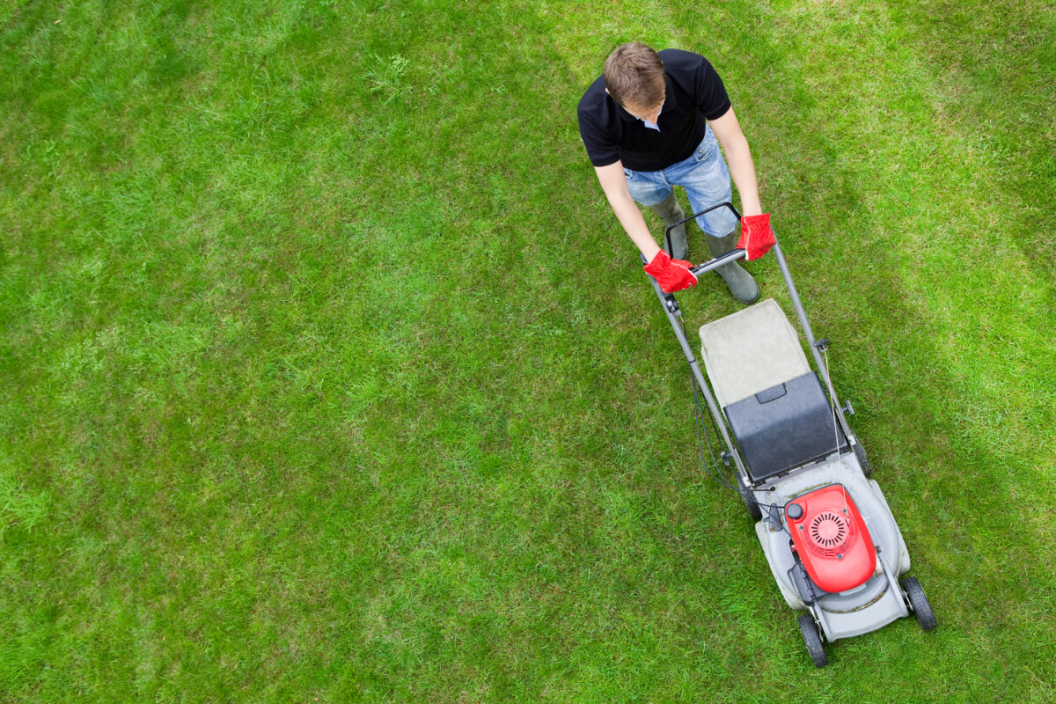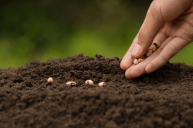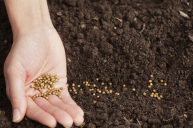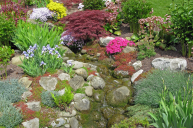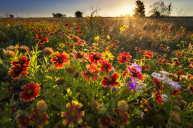Lawns simultaneously interest and confuse me. The rolling green hills of perfectly trimmed lines of monotonous green is a staple of suburban neighborhoods and a symbol for the modern American landscape. Lawns are our number one crop (three times more than corn at over 40 million acres) and they take a massive amount of management, resources, and chemicals, yet produce nothing besides aesthetics in return. So, if lawns don't serve a purpose other than aesthetics and are actively harmful to the environment and to us, why are they so popular in the first place? And what grass alternatives can we replace them with to build a more sustainable future for the next generations?
Videos by Wide Open Country
The very first lawns were created by English and French landscapers, acting as a status symbol indicating that the wealthy could afford to have land not used in food production. They drew upon the word "launde" for these areas, which referred to a grassy woodland clearing, and thus, the modern day lawn was born. Clover and turf grass were brought (along with an accidentally huge amount of invasive weeds) to North America by early colonial settlers, who needed it to feed their livestock which could not subsist on native plants alone.
Lawns became popular later in America as a status symbol largely due to Fredrick Law Olmstead's 1868 Riverside project outside of Chicago, which was one of the first planned suburban neighborhoods. His vision was to create a neighborhood that felt like a park, rolling along through the suburban landscape, although this left the onus of care to each individual.
This eventually led to the creation of HOAs, whose first purpose was to curate and maintain the uniformity of the neighborhood as well as keep "undesirables" out of the neighborhood. Through this, lawns became a status symbol of having achieved the 'American Dream'. HOAs (still to this day) are a large reason why lawns have not developed into something suited for modern times that reflect the values of our culture, as people are still being fined for growing out or replacing their lawns with plants more beneficial to the community, such as wildflowers and native plants.
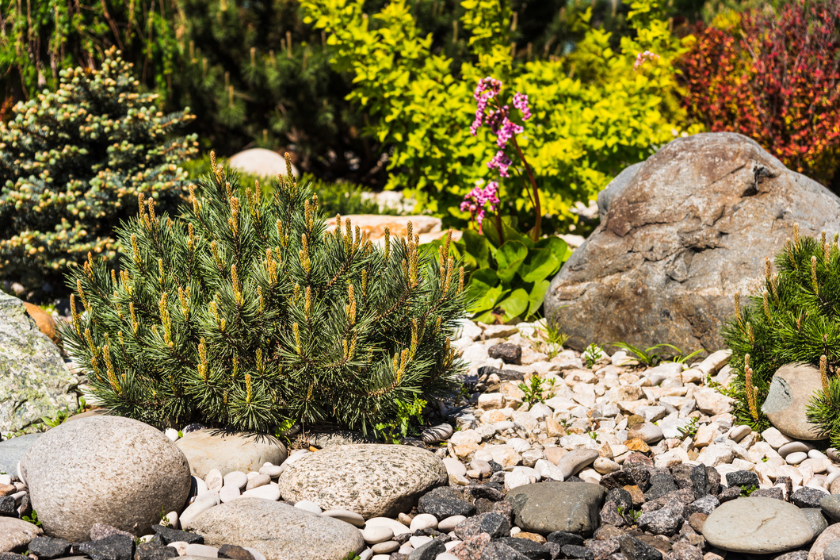
iStock/Getty Images
In this modern world, as one that is environmentally aware and attempts to mitigate the damage of climate change, individual household lawns do not have a place. I spoke with Tory Erpenbeck of Native Yardening, who is an environmental consultant with a Master of Science in Sustainable Design, to get his expert opinion about lawns, and what they should be replaced with. In short, Erpenbeck shares that planting native is a huge key.
Because not a single species of turf grass is native to North America (no, not even Kentucky Bluegrass!) they take vast amounts of water and chemical pesticides to survive. According to the EPA, an American uses one third of their water on landscape irrigation, which accounts for 9 billion gallons of water per day in the United States. As much as 50% of the water used outside is wasted on lawns while chemicals used on commercial lawns to suppress weeds can poison water supplies, as well as children and pets, and can kill insects essential to ecosystem strength. In short, lawns are a burden on the environment.
Turf grass is not genetically adapted for this region, so it doesn't have the ability or the root systems to sequester carbon or mitigate flooding like native North American plants do. Native North American plants have evolved to your specific climate, and require little to no maintenance once established. They are healthier, grow larger, live longer, and don't require chemicals to thrive. They are also nutritious food for pollinators with over 90% of herbivorous insects specializing on one or a few native plant lineages, which are called Keystone Plants.
Keystone plants are native plants that are vital to the local ecosystem. Not all flowers are as important or nutritious to pollinators, so some substitutes like clover lawns are not very sustainable by themselves. Erpenbeck compares it to only eating french fries and drinking mountain dew: sure, it's technically food and water, but it's not nutrition. Knowing what will feed your local pollinators is important, because they, in turn, are part of the process that feeds you.
So what should lawns be replaced with then and how do we start?
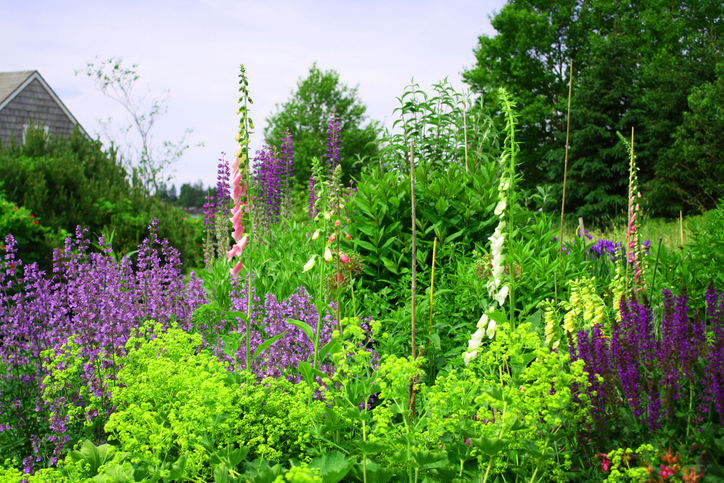
Getty Images
Erpenbeck notes the best way to start is by identifying everything that's growing around you. This is made easier with apps such as INaturalist or Seek. I use the Seek app and love it, because it will immediately tell you if a plant is native to where you are once it has been identified. The national wildlife foundation also has created a really helpful tool to find what plants are native near you. Erpenbeck says don't worry too much about getting the exact location when it comes to Native Plants, because plants didn't evolve with state lines in mind!
It's also good to identify what's invasive and have them removed, such as English ivy and kudzu, which will then open up space for volunteer native plants to move in. "It may not be your dream cottage core garden to start," Erpenbeck says, "But it will be better for the environment in the long run."
Once you've identified native plants in your garden and in your neighborhood, let them go to seed and collect the seeds for free! These native plants will spread more over time, with little to no labor and cost. If you have even a little bit of a budget, start small with a few plants and let it grow. Buying seeds from local companies is also an inexpensive way to start, and local seeds are genetically adapted to your microclimate already. As far as labor cost, see if there is a community of like minded people around you, and if there isn't, start one! When you can share the labor (and the seeds!) it makes it so much more enjoyable and an easier process to undertake.
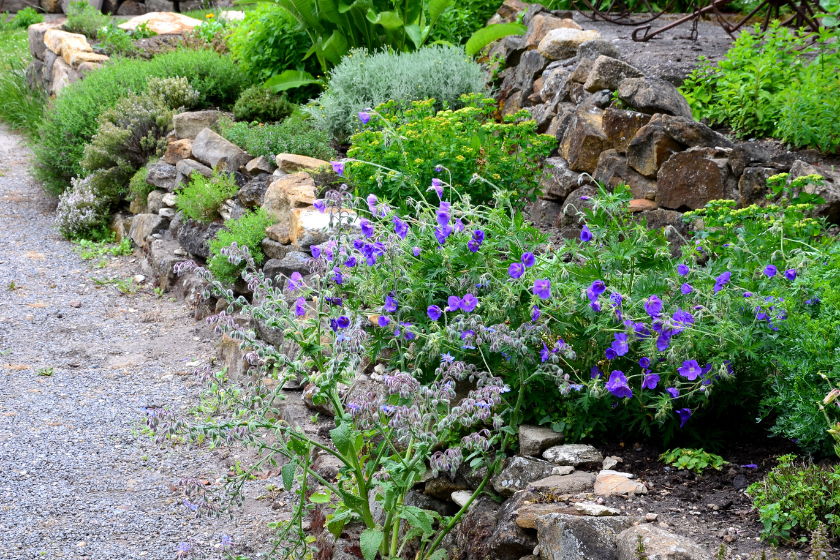
iStock/Getty Images
Some examples of native North American ground cover plants as alternatives for lawns:
- Wild Strawberry - Fragaria vesca
- Large Leaf Aster - Eurybia macrophylla
- Common Violet - Viola sororia
- Self-Heal - Prunella vulgaris
- Virginia Creeper - Parthenocissus quinquefolia
- Pennsylvania Sedge - Carex pensylvanica
- Mayapple - Podophyllum
- Spring Avens - Geum vernum
- Wild Geranium - Geranium maculatum
The PennState Extension also has a fantastic resource for more native wildflowers and ornamental grasses to plant.
Erpenbeck says it's his professional opinion that the biggest impact an individual can make to combat the climate crisis is to shift from using your yard as a place for aesthetics and social conformity into a carbon sequestering, wildlife conservation, and healthy ecosystem of native plants.
If you want to become a part of the change with us, head to homegrown national park and get put on the map for your native yard. Tory Erpenbeck also offers a Garden Audit, to work with you to ensure your yard and garden is reaching its full potential, which is available on his website.
We hope you'll join us in building sustainable yards that are healthier for humans, wildlife, and pollinators! It's time we changed our idea of what is aesthetically pleasing to fit with the modern times.
